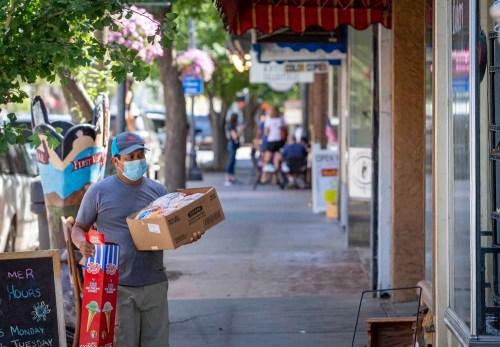Umatilla County polling shows divides in local COVID concerns
Published 8:00 am Saturday, September 5, 2020

- A man wears a mask while passing through downtown Pendleton on July 15, 2020.
UMATILLA COUNTY — A poll of Umatilla County residents’ thoughts on COVID-19 and the response to it shows an almost even split between those who are or aren’t generally worried about exposure to the virus.
According to the results of the poll, which was conducted by the Umatilla County COVID-19 Response and Recovery Team, 52% of respondents were “not too worried” or “not worried at all” about exposure to COVID-19, while 48% of respondents were either “very worried” or “somewhat worried.”
Trending
“There’s some people who don’t think any measures are necessary, there’s other people who are already being super cautious,” said Daniel Wattenburger, spokesperson for the response and recovery team. “We’re really looking for that middle ground.”
Within those groups, however, the polling suggested that the most prominent demographics of those who aren’t as concerned about the virus were white, male or from the Pendleton area.
Results showed 62% of Hispanic respondents and 57% of the people of color polled answered that they were very or somewhat worried versus just 42% of white residents. There was also a split with 57% of women saying they were concerned in some way compared to only 34% of men.
In response to a question of whether state measures in response to the pandemic have been enough, too much or too little, 38% of respondents answered that the state has gone too far. Another 35% said the measures have been “about right,” while 19% said they haven’t been enough. About 8% said they didn’t know.
Respondents from Pendleton and southern areas of the county were the least likely to be worried about the virus and most likely to feel the state measures are too much, with just 40% of those respondents saying they were worried and 45% saying the measures went too far.
Regardless of how concerned respondents were in general, the poll showed respondents were largely split in what they were the most concerned about with COVID-19 between the impact on the local economy (27%), the threat of contracting the virus (25%) and the impact on children not going to school (21%).
Trending
Despite the split in concerns, most respondents reported following guidelines to reduce the risk of spreading or contracting the virus, such as washing hands (88%), practicing social distancing outside the home (71%), wearing face coverings (67%) and avoiding social gatherings (67%).
The response and recovery team conducted the poll from Aug. 21-23 by calling and interviewing 250 residents over the age of 18. The poll’s respondents were reportedly 68% white, 23% Hispanic and 8% of another ethnicity.
There was a 53-47 split between men and women polled, and the poll was also split regionally in the county, with 48% of respondents coming from Hermiston and the western areas of the county, 32% coming from Pendleton and the southern areas, and 20% from Milton-Freewater and the eastern areas.
Wattenburger said the poll was the first step in the response and recovery team’s plan for educating the community, and that results will be used to inform upcoming messaging campaigns.
“We’re always looking toward who’s the persuadable audience and what’s the persuasive message,” Wattenburger said.
The poll also asked people what messages they would be most receptive to and who the messages would be most receptive from, and found that local health officials and providers have the highest rates of trust across all demographics.
“We know that about people here,” Wattenburger said. “They’re more likely to trust their local voices.”
The response and recovery team will be rolling out new messaging campaigns and advertisements in the weeks to come, and this week launched a new website and Facebook page that will share those messages along with communicating other information about the local response.
As the next messages get crafted using these poll results, Wattenburger said the key remains uniting the community behind the goals of reaching the “new normal.”
“Really the thing that we as a county have control over is how quickly we’re able to return to the new normal of having businesses open and kids in classrooms,” he said. “Whether you fear for your personal health or not, this is just the situation we’re in and we need to lower these numbers.”









